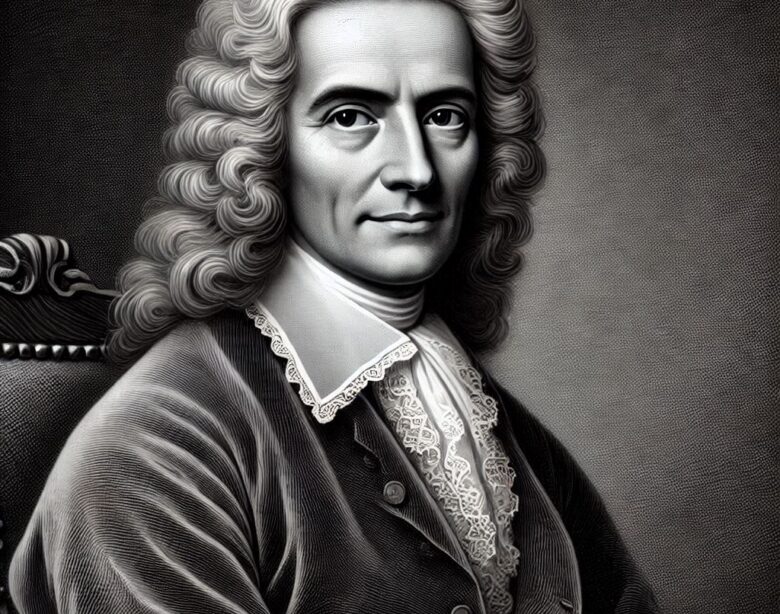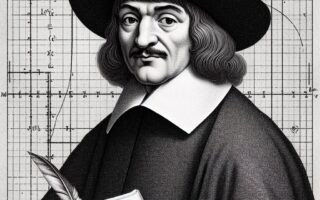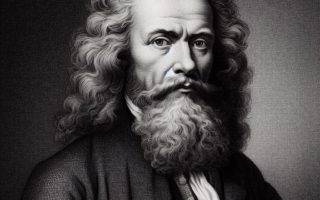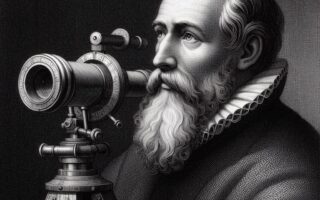Daniel Bernoulli: The Mathematician Who Bridged Mathematics and Science
Daniel Bernoulli (1700–1782) was a Swiss mathematician and physicist, widely regarded as one of the leading figures in the history of science. As a member of the renowned Bernoulli family, which produced several prominent mathematicians, Daniel carved his own legacy by blending mathematical theory with practical scientific applications. His contributions to fluid mechanics, probability theory, and mathematical physics not only shaped the scientific landscape of his time but also laid the groundwork for modern engineering and technology.
Early Life and Education
Daniel Bernoulli was born on February 8, 1700, in Groningen, in what is now the Netherlands. He was the son of Johann Bernoulli, a prominent mathematician who was one of the early proponents of calculus. Daniel grew up in an intellectually vibrant environment, learning mathematics from an early age alongside his siblings, who also pursued careers in mathematics and science.
Despite his family’s mathematical tradition, Daniel initially studied medicine, earning a doctorate in the subject from the University of Basel. However, his interest in mathematics and physics never waned, and he eventually combined his medical knowledge with mathematical expertise, focusing on problems related to physiology, mechanics, and hydrodynamics.
The Bernoulli Family Rivalry
While the Bernoulli family contributed immensely to mathematics, it was also known for intense rivalries. Daniel’s relationship with his father, Johann, was particularly strained. Johann was jealous of Daniel’s achievements and even attempted to claim credit for some of his son’s work. Despite these challenges, Daniel’s contributions remained distinct and transformative, earning him recognition across Europe.
Key Contributions to Mathematics and Science
Hydrodynamics and the Bernoulli Principle
Daniel Bernoulli’s most famous contribution is his work in fluid mechanics, particularly his development of the Bernoulli Principle. Published in his seminal work Hydrodynamica in 1738, this principle describes the behavior of fluid flow and the relationship between pressure, velocity, and elevation.
The Bernoulli Principle states that in a steady flow, the sum of a fluid’s pressure energy, kinetic energy, and potential energy remains constant. Mathematically: $$P+ \frac{1}{2}ρv^2 +ρgh=constant$$
Where:
- P is the pressure,
- ρ is the fluid density,
- v is the velocity,
- g is the acceleration due to gravity, and
- h is the height above a reference point.
This principle has far-reaching applications, including:
- Aviation: The Bernoulli Principle explains how air pressure differences generate lift for aircraft wings.
- Medicine: It aids in understanding blood flow dynamics in arteries and veins.
- Engineering: It is used in the design of pumps, turbines, and piping systems.
Kinetic Theory of Gases
Daniel Bernoulli was one of the first scientists to develop the kinetic theory of gases. In Hydrodynamica, he proposed that the pressure of a gas arises from the motion and collisions of its particles. This groundbreaking idea linked macroscopic properties, such as pressure and temperature, to microscopic particle behavior, anticipating later work by Ludwig Boltzmann and James Clerk Maxwell.
This insight was instrumental in the development of statistical mechanics, a field that combines mathematics and physics to explain thermodynamic phenomena.
Probability Theory and Statistics
Bernoulli also made important contributions to probability theory and statistics. Building on the work of his uncle Jacob Bernoulli, Daniel applied probability to practical problems, such as games of chance and risk assessment in financial contexts.
One notable application was his work on life insurance and annuities, where he used probabilistic methods to evaluate risks and calculate premiums. This laid the groundwork for the modern field of actuarial science.
Vibration and Mechanics
Daniel Bernoulli studied the mechanics of vibrating strings and elastic structures, a topic closely related to wave theory. He formulated equations to describe oscillations and harmonics, contributing to the mathematical foundation of acoustics and music theory.
His work in this area also influenced the study of structural mechanics, with applications in architecture and engineering.
Influence on Mathematical Physics
Daniel Bernoulli’s approach to solving physical problems using mathematical models exemplified the integration of mathematics and physics during the 18th century. His ability to combine rigorous mathematical techniques with empirical observations helped establish mathematical physics as a distinct discipline.
Recognition and Legacy
Awards and Honors
Daniel Bernoulli received widespread recognition for his work. He won ten prizes from the Paris Academy of Sciences for his contributions to topics such as astronomy, magnetism, and ocean tides. These accolades solidified his reputation as one of the leading intellectuals of his time.
Lasting Impact
Bernoulli’s contributions have had a lasting impact on various fields:
- Aviation and Aerodynamics: The Bernoulli Principle remains a cornerstone of aerodynamics, essential for designing aircraft, drones, and other flying machines.
- Fluid Mechanics: Engineers and scientists use his equations to model fluid flow in industries ranging from oil and gas to biomedical engineering.
- Physics and Thermodynamics: His work on the kinetic theory of gases provided a foundation for understanding molecular behavior in thermodynamic systems.
- Mathematics: His contributions to probability theory and statistical mechanics continue to influence modern mathematics and science.
Personal Traits and Philosophical Approach
Daniel Bernoulli was not just a mathematician but also a thinker who sought to unify theoretical knowledge with practical applications. He approached problems with a blend of creativity and analytical rigor, emphasizing the importance of observation and experimentation in scientific inquiry.
Challenges and Rivalries
Despite his achievements, Daniel Bernoulli faced challenges, including his strained relationship with his father. Johann Bernoulli’s attempts to undermine Daniel’s work created tension that persisted throughout their lives. Nevertheless, Daniel’s resilience and dedication allowed him to rise above these difficulties and make lasting contributions to science.
Conclusion
Daniel Bernoulli’s life and work exemplify the power of combining mathematical theory with scientific application. From the Bernoulli Principle to the kinetic theory of gases, his contributions have had a profound and lasting impact on mathematics, physics, engineering, and beyond.
By bridging the gap between abstract mathematics and real-world phenomena, Bernoulli not only advanced scientific understanding in his time but also paved the way for future generations of scientists and mathematicians. His legacy is a testament to the enduring value of interdisciplinary thinking and the pursuit of knowledge.
Please Visit Our Sponsors:
We only support vendors that we use ourselves in our home. The links below are our own links or affiliate links but know that we use all of these now, or have in the past. As the author/creator of this blog, I also tutor mathematics on Wyzant, sell on Etsy, create content on TpT, and learn Korean on Rosetta Stone.





